
|
|||||||||||||||||||
|
|||||||||||||||||||
| Croft Crafts Behaved Bots | |||||||||||||||||||
Human-robot interaction is becoming even more important as more and more things, in everything from industry to health care, are now automated. With the mention of the term, “robot”, my immediately leaped to the image of cute little 50 pound robots resembling C3PO, with eyebrows and a smiley face painted on. But Croft quickly explained that the robots we were talking about consisted of tonnes of crushing metal and were anything but cute! Most of the robotics in industry are large, loud, and can transmit hundreds of pounds of force. Working around the equipment in an auto plant, for example, is understandably terrifying. Croft’s work involves determining what kind of non-verbal communication goes on when humans interact, so that non-humans can pick up on those cues. For example, if two humans are moving a desk, one mover can tell that another mover’s arms are shaking and could prepare to put the desk down. Since a lot of visual cues are cultural, Croft uses the correlation of physiological signs with “distress”, so that a robot can determine the comfort level of its human companions. That way, if an employee is uncomfortable with how quickly a robot arm is approaching them, then the robot can reduce its speed or back off. Croft and her colleagues test things like heart rate, skin conductivity, and facial movements, much as a lie detector test might. Through her webpage, you can view a video of a prototype robot that responds to not only physiological stress in the human individual, but to other things, such as a lapse in human attention. When the young man in the video breaks eye contact with the robot, for example, and looks off in another direction, the machine responds by pausing as not to alarm him. You can watch this yourself at: http://www.mech.ubc.ca/~caris/Videos/PreCollHRI.wmv Elizabeth and her team have made great innovations in making robots more polite. However, she reminds me that “AI is only as smart as the people who design it”. Good thing Elizabeth is in charge!
|
|||||||||||||||||||
| Welcome Women in Engineering Physics | |||||||||||||||||||
One of the most successful components of the initiative, Anja tells me excitedly, is her creation of an email list for the women in the program. Because privacy issues prevented UBC from releasing email addresses, Anja personally tracked down each woman in the program to ask for her contact information. While it was quite a bit of work, it was also a blessing in disguise, because it gave her the opportunity to introduce herself to everyone and to obtain the email addresses they actually check! The email list serves as the perfect vehicle for important information such as the accomplishments of other female students, meeting dates, available funding, etc. Anja describes this information sharing as “crucial”. Creating an atmosphere that makes women feel more included is crucial to maximizing their productivity, success and happiness. The Women in Engineering Physics group also does things like sending representatives to career fairs to provide information on support networks for women in engineering, and reaching out to high school students. It has been an interesting evolution for Anja and the group, whose original proposal called for creating a social network. However, due to excessively busy schedules, the women couldn’t meet as often as they liked. So instead, the clever organizers refocused the group on two main goals: providing information to current female students and reaching out to potential female students. Anja finds a crucial ally in Dr. Andre Marziali, the head of the Engineering Physics program. She says that she couldn’t have done all this work without him! He recognizes that much more needs to be done to make a program that is more inclusive to female students. Much of the problem, he feels, is that there is a lot of confusion about what is involved in Engineering Physics. According to Dr. Marziali, a lack of definition of the program discourages women more than men. Most people don’t understand exactly what engineering physicists do, which is understandably because many of their projects are highly interdisciplinary. For example, one of his research project involves techniques from genomics, electrical engineering, and nanotechnology to isolate genes from DNA – something which would be very appealing to female students. Moreover, previous recruitment material was created by men and featured exclusively pictures of men. These things contribute to very low female enrolment. One way he is trying to address ambiguity about the program and the discouragement of woman applicants is by striking a committee of female Engineering Physics students who will provide input into departmental recruitment material and the website. Another positive change pioneered by the group is the creation of a Female Student Representative to the Engineering Physics Department. Among other duties, the representative acts as a liaison between the department and female undergraduate students. Anja has filled this position since its inception. Dr. Marziali tells me that having a liaison has been valuable for providing input to the department and support to female students that are more comfortable bringing their concerns in front of a woman. Between her grueling course and lab work, and her numerous involvements, Anja approaches each with passion and dedication. And it is working! She tells me that while her initiatives are indeed controversial, that she finds her projects very rewarding. When she first advocated for things such as a female Engineering Physics liaison, she was met by opposition. Women in the program were concerned that these changes might make it seem that women were being given an unfair crutch or being treated easier than their male counterparts. However Dr. Marziali and Anja were able to address these concerns by providing a clear definition of the Women in Engineering Physics mandate. They reiterated that the main goals would be information distribution and outreach, goals which everyone could get behind. As a student of mathematics, surrounded by predominantly male classmates, I cannot help but relate to this feeling of isolation. Maybe it is partially because of her compelling stories and pragmatic demeanor, but by the end of our conversation, I agree with her. Creating an atmosphere that makes women feel more included is crucial to maximizing their productivity, success and happiness. A full year into the initiative, it is hard to argue with the statement that Anja is effecting real change. With the support of Dr. Marziali and volunteers, she is making the experience of females new to Engineering Physics more positive, so that they can get the most out of this rigorous and fascinating program.
|
|||||||||||||||||||
I first met Maria Klawe on my very first day at UBC. Back in September of 2002, she was the Dean of Science and hence the keynote speaker for the first year Science orientation session. I still remember her address to us first year science students: university was going to be hard! But this reality should not discourage us, it should only make us work harder. Klawe told us that a step to success in life was picking something that we were terrible at, and working diligently until we conquered it. For her, this difficult task that had taken her months to overcome was juggling! And sure enough, she put down her microphone and picked up a handful of juggling balls. The inspiration was palpable as we left the auditorium that day. “You can do everything you want to in life, but not at the same time.” Five years later, I was offered the opportunity to meet with the very same Maria Klawe to talk about her role in the Jade Project. She was no longer at UBC. Klawe’s dedication to undergraduate education led her to become President of Harvey Mudd College. Humbly referred to as “Mudd”, the school specializes in providing well-rounded educations to excellent science, mathematics and engineering students. She was back at UBC to give a lecture entitled “Gender, Lies, and Videogames”, in which she discussed issues such as why fewer girls choose to pursue computer science. This remarkable woman had been a visionary UBC computer science department head before her appointment as Dean of Science at UBC. Next, she had gone on to be Dean of Engineering at Princeton. Upon meeting her, I got a much richer story. As an undergrad, she chose to study math because she was intrigued by the honours math classes offered at the University of Alberta. After second year, she took a break from university life and traveled for a year and a half – during which time it became clear to her that she really did love math. She came back to the university and requested with characteristic spunk that they let her start her Ph.D. straight away. The university allowed her to finish up her degree with graduate courses and she finished her doctorate in mathematics. To this day, she is still finding creative ways to involve math in her numerous projects. Some of the projects that I thought were the most interesting were EGEMS and the UBC Aphasia Project work with her good friend, the late Anita Borg. The EGEMS Project, which stands for “Electronic Games for Education in Math and Science”, developed educational games for learners aged 9 to 14. They used cutting edge new technology to engage students in math and science. Of particular interest to me, however, was the fact that Klawe’s group analyzed the differences in gaming styles between the genders. They found that girls “progress more meticulously”, meaning that they like to take more time exploring whereas boys like to complete levels more quickly. This certainly described my tendencies! Klawe and the EGEMS developers took this into account when they developed their software so that both types of gaming style were supported. I thought that was a great new twist on educational gaming! Another interesting initiative started by Klawe was the Aphasia Project. In 2000, Klawe found out that her good friend Anita Borg had brain cancer. As a complication, Borg developed aphasia, a condition which interferes with the brain’s ability to process language even while a person’s mental faculties remain unaffected. This can be hugely frustrating and reduces quality of life. Klawe and Borg, herself a brilliant computer scientist, teamed up and initiated a project to develop computer-assisted technology to help people with aphasia carry out basic daily tasks, such as remembering meetings and appointments. For example, one prototype technology to come out of the initiative is a portable scheduling device that helps marks dates with sounds and images, which people with aphasia can interact with more easily than with language. Sadly, Borg passed away in 2003, but not before she helped others cope with aphasia. Klawe and Borg certainly have accomplished a lot. So I ask her: how exactly do we accomplish everything we want to? The key, she says, is living life in phases. For example, she and her husband did the “social thing” until they had kids, at which point they both made spending time with their kids top priority until their youngest was in kindergarten. Then, Klawe started to enjoy her favourite leisure activities, such as running and painting. “Take advantage of whatever phase you’re in”, she says with a smile. Even when in her child-rearing phase, Klawe still found ways to inspire her kids to like mathematical thinking. Says Klawe, her two kids became “guinea pigs for teaching mathematics”. She also admits that a lot of the inspiration for the EGEMS games came from watching her children play games. Her efforts nurturing mathematical interest in her kids seems to have paid off. She tells me the story of her own daughter, Sasha, whose passion is for international development. Sasha is studying at UC Berkeley and recently spent a semester in Cape Town, South Africa. She has discovered that the strong math background is valuable in her courses on economics in Africa. This is just one example of how mathematics surprisingly winds up in diverse careers. However, in case you’re interested in pursuing a distinguished and fascinating career like Klawe’s, my favourite question to ask is always what advice my interviewee would give to a girl in grade 9 or 10 interested in following in her footsteps. “You can never learn too much mathematics,” smiles Klawe. “It’s like sports; you lose proficiency if you don’t practice it.” |
|||||||||||||||||||

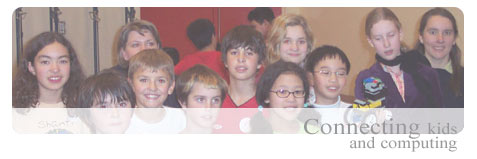
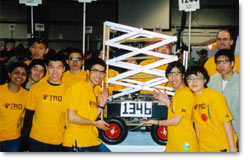
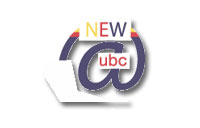
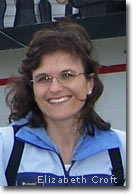 Dr. Elizabeth Croft has managed to carve out a niche for herself in the world of mechanical engineering. Despite new innovations in robotics, something which still remains unsolved is how to make people more comfortable around their mechanical counterparts. She specializes in the area of human-robot interaction.
Dr. Elizabeth Croft has managed to carve out a niche for herself in the world of mechanical engineering. Despite new innovations in robotics, something which still remains unsolved is how to make people more comfortable around their mechanical counterparts. She specializes in the area of human-robot interaction.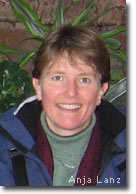 “When I started in Engineering Physics, female enrolment was only 6%,” points out Anja Lanz, as I speak with her outside a classroom on the quiet third floor of the Physics building. She is immersed in a study group, but takes the time to fill me in about a new initiative she is spearheading at UBC. It is called Women in Engineering Physics – Recruitment and Networking, and it is designed to welcome more women into the program and make them feel more at home. Anja believes this initiative can alleviate the kind of isolation she felt when she was first a student in Engineering Physics.
“When I started in Engineering Physics, female enrolment was only 6%,” points out Anja Lanz, as I speak with her outside a classroom on the quiet third floor of the Physics building. She is immersed in a study group, but takes the time to fill me in about a new initiative she is spearheading at UBC. It is called Women in Engineering Physics – Recruitment and Networking, and it is designed to welcome more women into the program and make them feel more at home. Anja believes this initiative can alleviate the kind of isolation she felt when she was first a student in Engineering Physics.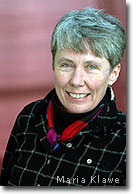 “You can do everything you want to in life, but not at the same time,” says Dr. Maria Klawe. There’s something about this dynamic woman that makes you believe it, even without knowing her impressive credentials. That innate ability to convince us that we can achieve great things – through words and example – is part of her success as a leader. And what a leader she is!
“You can do everything you want to in life, but not at the same time,” says Dr. Maria Klawe. There’s something about this dynamic woman that makes you believe it, even without knowing her impressive credentials. That innate ability to convince us that we can achieve great things – through words and example – is part of her success as a leader. And what a leader she is!